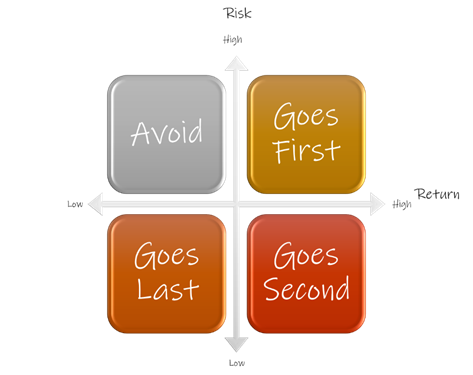
An organization’s ability to rapidly and deliberately respond to changing demand, while controlling risk helps ascertain its Agility. If practiced in true essence, Scrum helps teams and organizations mitigate risks through its rules. Let’s look into some of these –
Iterative Delivery
By building the product iteratively with each Sprint focusing on delivering increment of highest possible value for the customers, Scrum mitigates the risk of lack of visibility to the stakeholders regarding the product being built. Every Sprint gives an opportunity to Scrum Team and stakeholders to come together and inspect the working product increment to keep everyone abreast about the product being built and make necessary changes in the tactical direction if needed.
Sprint Length
I have been a Scrum Master for a team where we were in a situation that our initial Sprint length of 3 weeks. Sometimes the stakeholders were unhappy due to product increment digressing from their expectations. There were instances where Product Owner cancelled the Sprint due to Sprint Goal becoming obsolete. To mitigate such risk of accumulating waste by building unwanted features, team eventually decided to keep Sprint length of 1 week. This helped gathering stakeholders’ inputs on timely basis and building the right product.
Product Backlog Ordering

Product Owner would constantly order/ re-order Product Backlog to ensure highest value gets delivered to the customers. As indicated in the above picture, by building the high risk/ high value items upfront, Product Owner can mitigate the risk of building right product during the early stages.
Release Planning
To help validate the value assumptions (stated above), it is imperative that Product Owner releases these features to customers frequently to get their valuable feedback. This will help save time and money for the organization.
Definition of ‘Done’
7th principle in Agile Manifesto states, “Working Software is the primary measure of progress”. Instead of preparing status reports, teams can bring in transparency by showcasing the product increment that is releasable. Uncovering the risk is different when we inspect a real working Increment and know what work was done to make it releasable. Definition of “Done” is the key checklist that helps everyone understand all activities Development Team have undertaken to ensure that the product is releasable. This has been the missing key in traditional product development for a long time.
Mitigating risk needs to be integral part of building any product. Scrum has added safeguards through its rules to help teams practicing it in the right essence to stay ahead of the curve. There are different ways you can mitigate your risks. Would like to hear from you what are the other ways you have tried to mitigate risks.
Exclusive pmmagazine.net 💬
Punit Doshi
About author
Scrum.org Professional Scrum Trainer
Punit has over 18 years of IT experience with over 5 years of Agile Transformation experience. He has played the role of Scrum Master and Agile coach at a large US bank and has passion for Enterprise Level Agile Transformation.
He has worked in different industries (Finance, Insurance, Healthcare, Publishing and IT Research) at different levels from being a hands-on Software Developer to being a Change Agent. He specializes in helping the BSFI & Insurance sector with Agile adoption. Punit strongly believes in the Scrum.org’s mission to improve the profession of Software Delivery.

